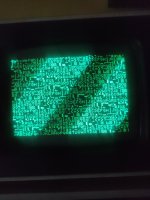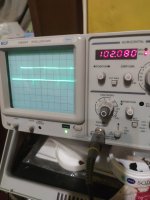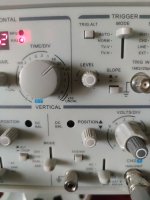So no more repairs until you use one of your working PETs to learn some electronics... Happy to help with the learning so you are not on your own - but let's start a new thread for this.
In the meantime what devices are in sockets on this PET? Is the character generator (F10), latch (F9) or video RAM (F7/F8) in sockets or not?
I am suspecting that the problem is somewhere on schematic
http://www.zimmers.net/anonftp/pub/cbm/schematics/computers/pet/2001N/320349-8.gif and associated with signal SD7 to/from F7 (because the character looks correct - it is just in inverse video). The question is "what is causing this"...
It can't be a 'hard' fault if sometimes the characters 'twinkle'.
With no 6502 CPU in we didn't have any 'twinkling' characters (implying the 'twinkle' is associated with the CPU access) but the screen was less-than-random to me.
When the NOP generator was in, what did you observe on the screen then? The CPU would have been reading from the screen RAM, but not writing to it, at this stage.
I am partially thinking of a 'slow' or 'noisy' gate or signal somewhere.
One possible test we could do (with the PETTESTER running) would be to connect F9 pin 12 (74LS373 Q5 = signal LSD7) to 0V/GND via a 100 Ohm (or so) resistor and see what we get then. This would 'kill' the inverse video characters, but it would be interesting to see if it fixes the non-inverse video characters.
Dave




